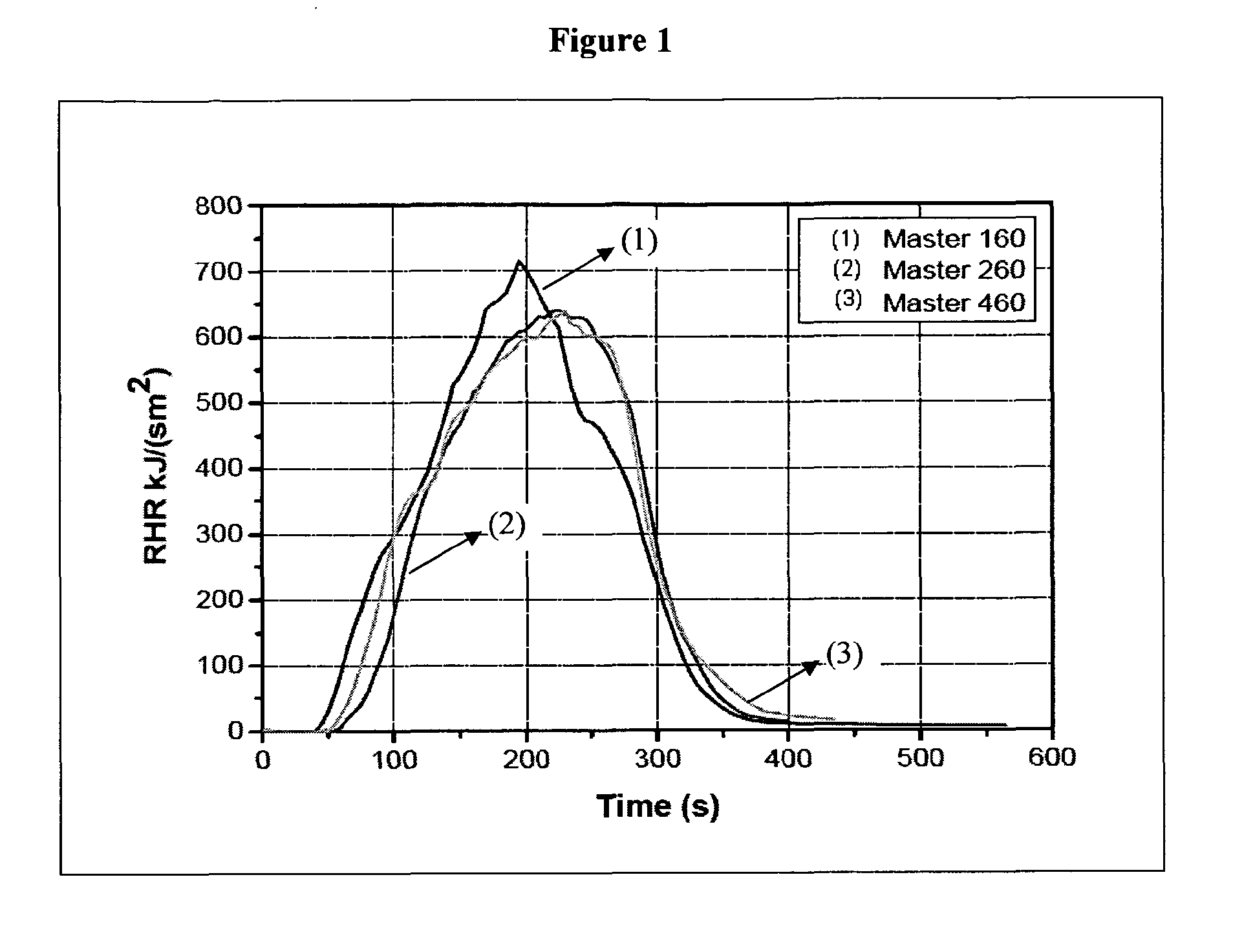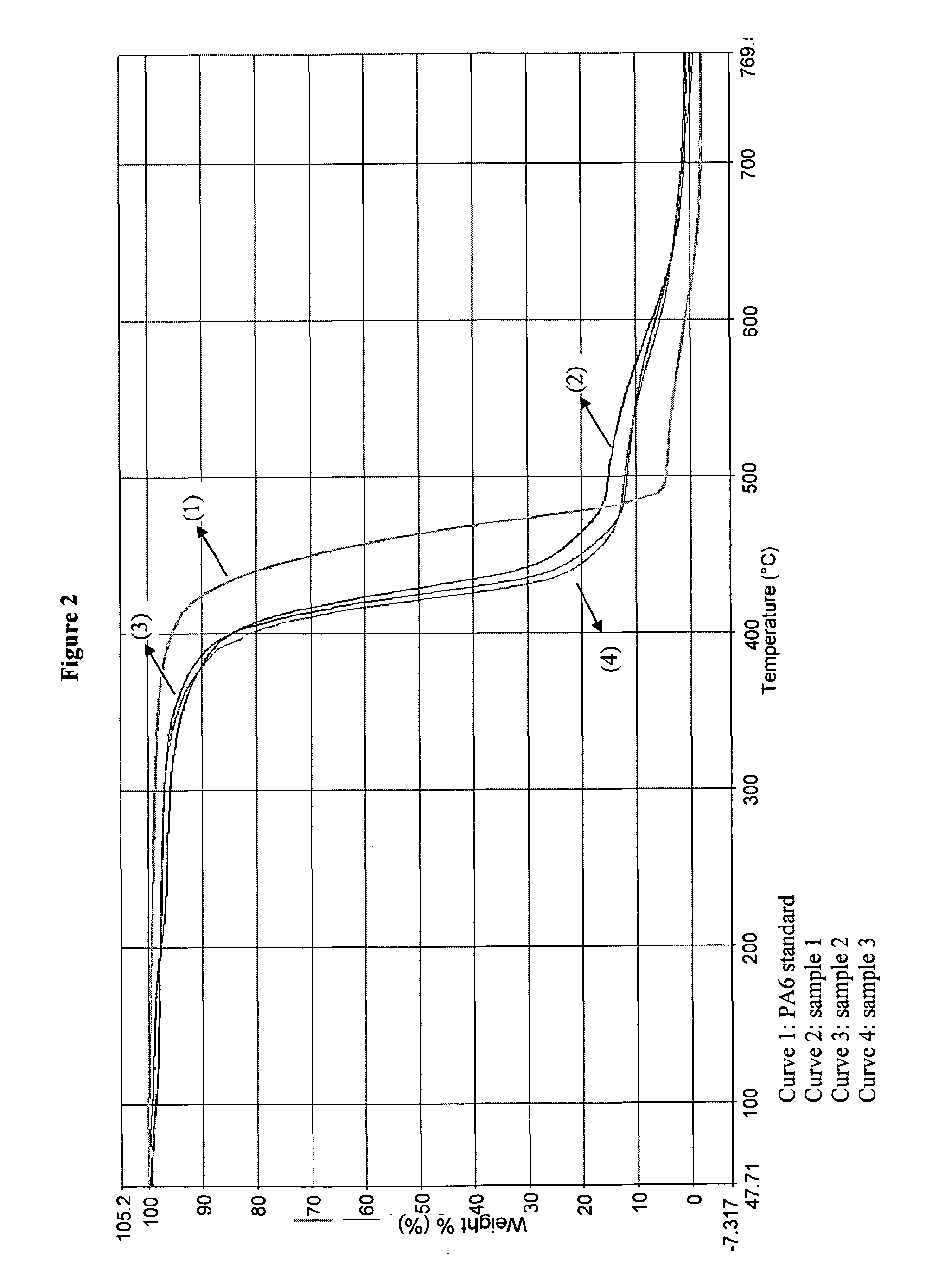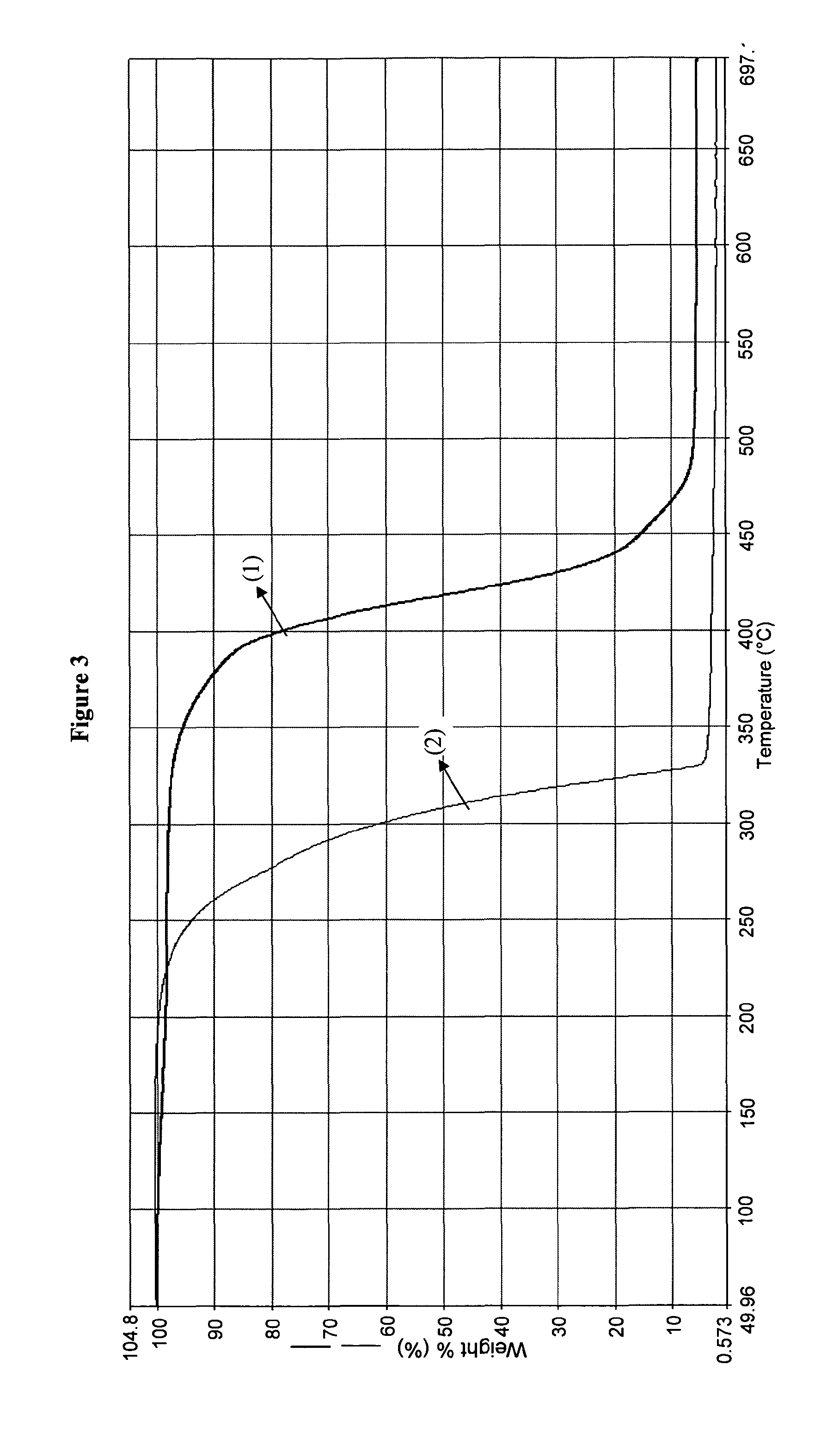Star-and tree-shaped branched polymers having flame-retardant properties
a polymer and tree-shaped technology, applied in the direction of fireproof paints, etc., can solve the problems of deterioration in mechanical properties, loss of properties, and difficulty in evenly distributing additives in the matrix, and achieve the effects of reducing the cost of materials, and improving the mechanical properties
- Summary
- Abstract
- Description
- Claims
- Application Information
AI Technical Summary
Benefits of technology
Problems solved by technology
Method used
Image
Examples
example 1
[0042]
Caprolactam85%mol / molAminocaproic acid:8.15%mol / molBis(hexamethylene)triamine (HBHT):0.95%mol / molCEPPA:5.9%mol / mol
[0043]The reagents are introduced simultaneously into the feed.
[0044]A polymer with 460 meq / Kg of CEPPA is obtained.
[0045]A polymer was also prepared using the same monomer ratios, but without CEPPA, to determine its molecular parameters with a mathematical model according to the conversion.
example 2
[0046]
Caprolactam89.2% mol / molAminocaproic acid:8.55% mol / molBis(hexamethylene)triamine (HBHT):0.31% mol / molCEPPA:1.94% mol / mol
[0047]The reagents are introduced simultaneously into the feed.
[0048]A polymer with 160 meq / Kg of CEPPA is obtained.
example 3
[0049]
Dimethylterephthalate (terephthalic acid derivative)48.5% mol / molEthylene Glycol45.0% mol / molplus an excess of 50% with respect to the stoichiometricethylene glycolPentaerythritol 0.5% mol / mol2-(diphenylphosphoryl)ethanol 6.0% mol / mol
PUM
| Property | Measurement | Unit |
|---|---|---|
| Mass | aaaaa | aaaaa |
| Mass | aaaaa | aaaaa |
| Fraction | aaaaa | aaaaa |
Abstract
Description
Claims
Application Information
 Login to View More
Login to View More - R&D
- Intellectual Property
- Life Sciences
- Materials
- Tech Scout
- Unparalleled Data Quality
- Higher Quality Content
- 60% Fewer Hallucinations
Browse by: Latest US Patents, China's latest patents, Technical Efficacy Thesaurus, Application Domain, Technology Topic, Popular Technical Reports.
© 2025 PatSnap. All rights reserved.Legal|Privacy policy|Modern Slavery Act Transparency Statement|Sitemap|About US| Contact US: help@patsnap.com



